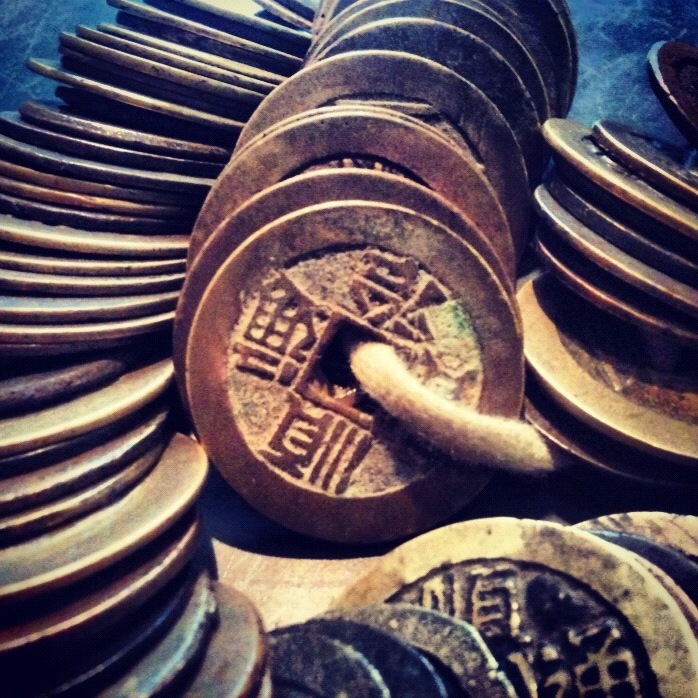Day 24 - Chinese Cash Coins (8019085165) (3)
A String of Chinese Cash Coins
The Money Gallery is a collaborative venture with the British Museum, under the UK Partnership scheme. It aims to be universal in scope, by looking at the different traditions of coinage in West and East, as well as premonetary value systems.
Visitors are invited to handle a variety of artifacts relevant to the Money Gallery.
This is a set of 100 Chinese cash coins. Their places of issue include various mints in China, Japan and Vietnam. The oldest coin of this set was issued in the Tang dynasty (618-907AD), China; the latest piece was issued between 1862 and 1874. Most of the coins date from the 18th and 19th centuries. They are made from a copper alloy (mostly bronze and brass) and weigh about 390g.
This set has been put together for handling and educational puropses. In East Asia, it was customary to pass a thread through the central hole to create a 'string of coins' (normally 1000, but could be fewer than this in practice) for ease of carrying and spending. A set of 100 coins would be just a segment of a 'string of coins'. A string of 1000 coins was supposed to be equal to 1 'liang' (about 37g) of silver.
A set of coins would often consist of genuine coins as well as contemporary imitations. The contemporary imitations and coins from previous dynasties were both accepted in transactions, but in a discounted value. So in practice, the value of a 'string' of coins was not fixed. Its value would be decided on the basis of how many 'good' amd 'bad' coins there were in a particular string.
The opportunity to handle this string of coins, and to feel the weight of this set of just 100, allows the visitor to contextualise the introduction of paper money as currency.Relevante Bilder
Relevante Artikel
KäschKäsch ist die Bezeichnung für chinesische, japanische, koreanische, vietnamesische und sino-indonesische alte Kursmünzen aus Messing, Bronze, Kupfer oder sehr selten Eisen bzw. Zinn oder Blei mit einem meist quadratischen und selten runden Loch in der Mitte. In der Ming-Zeit bestanden diese Münzen aus besonders stark bleihaltiger Bronze, so dass sie sehr leicht durch Bruch halbiert und geviertelt werden konnten. Diese Münzart war von Anfang an eine meist uneinlösbare Scheidemünze der unteren Bevölkerungsschichten. Gold oder Silber wurden daher auch für Käschmünzen niemals verwendet. Siehe ergänzend Tael und Lochmünzen. .. weiterlesen




